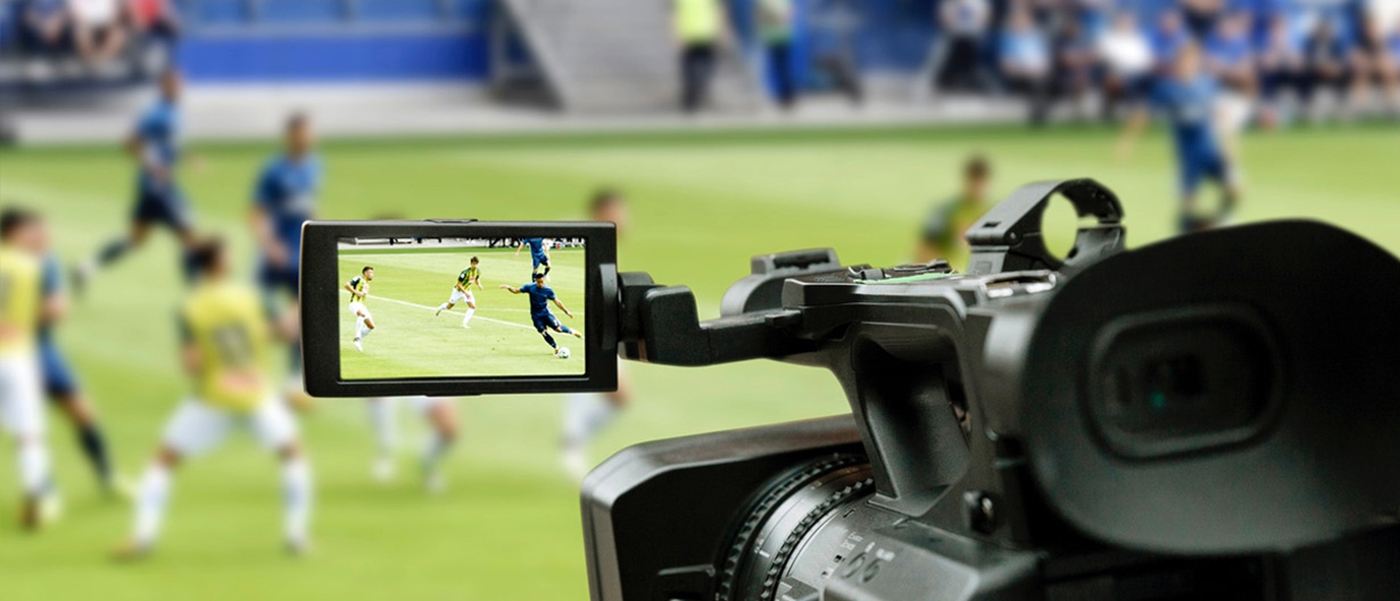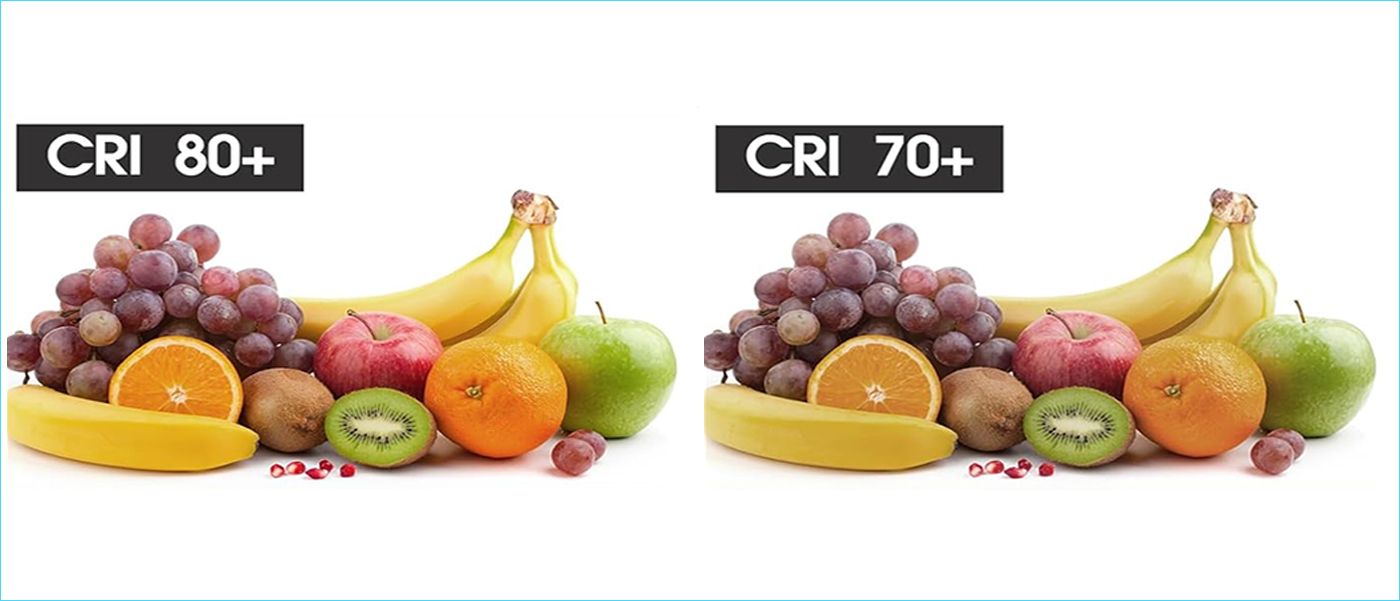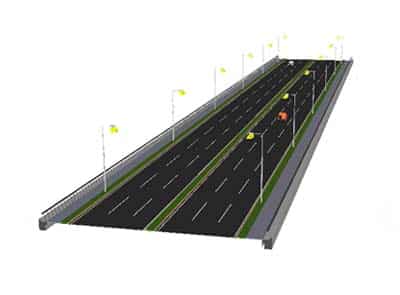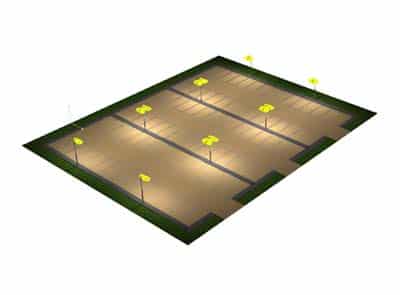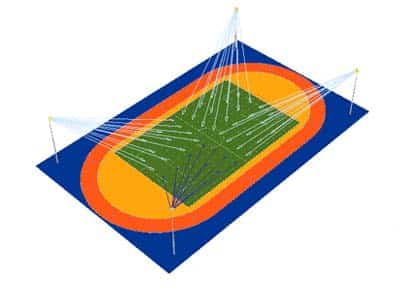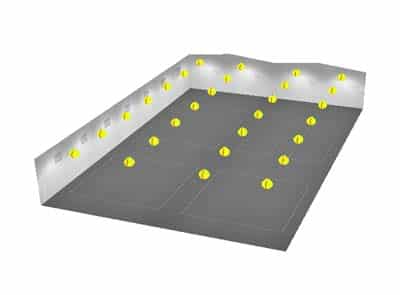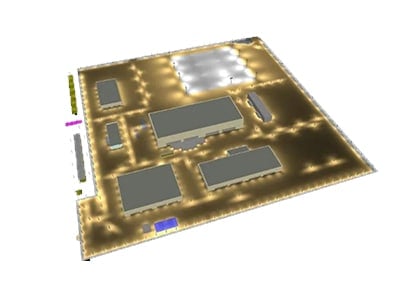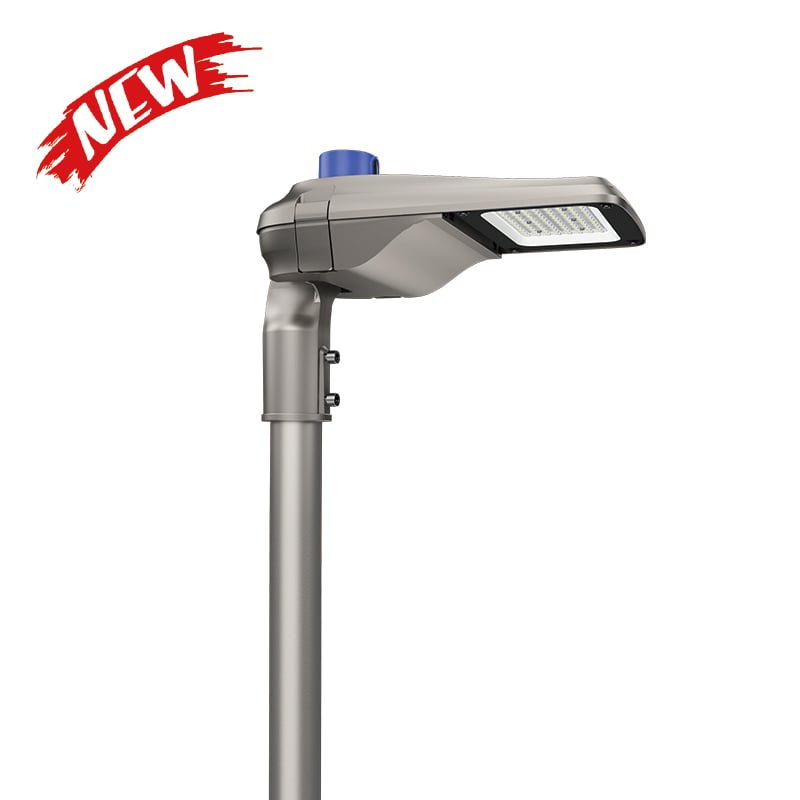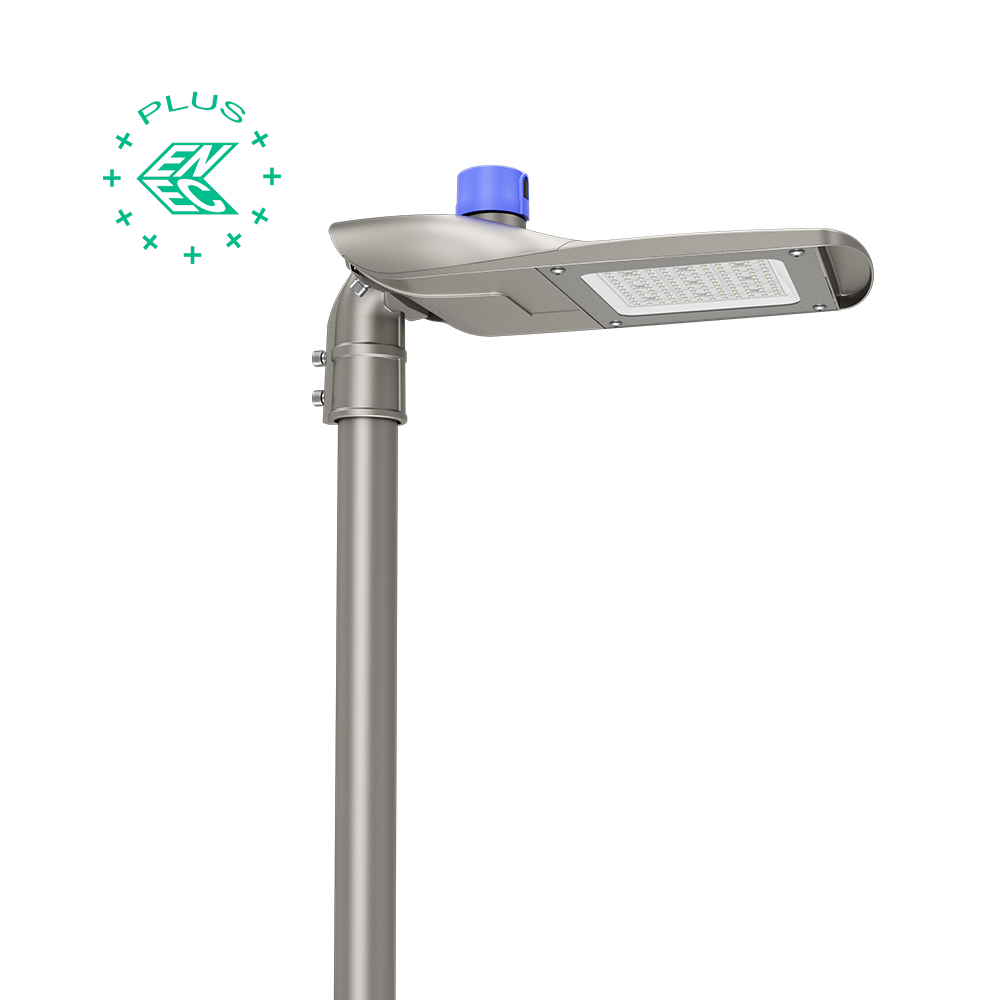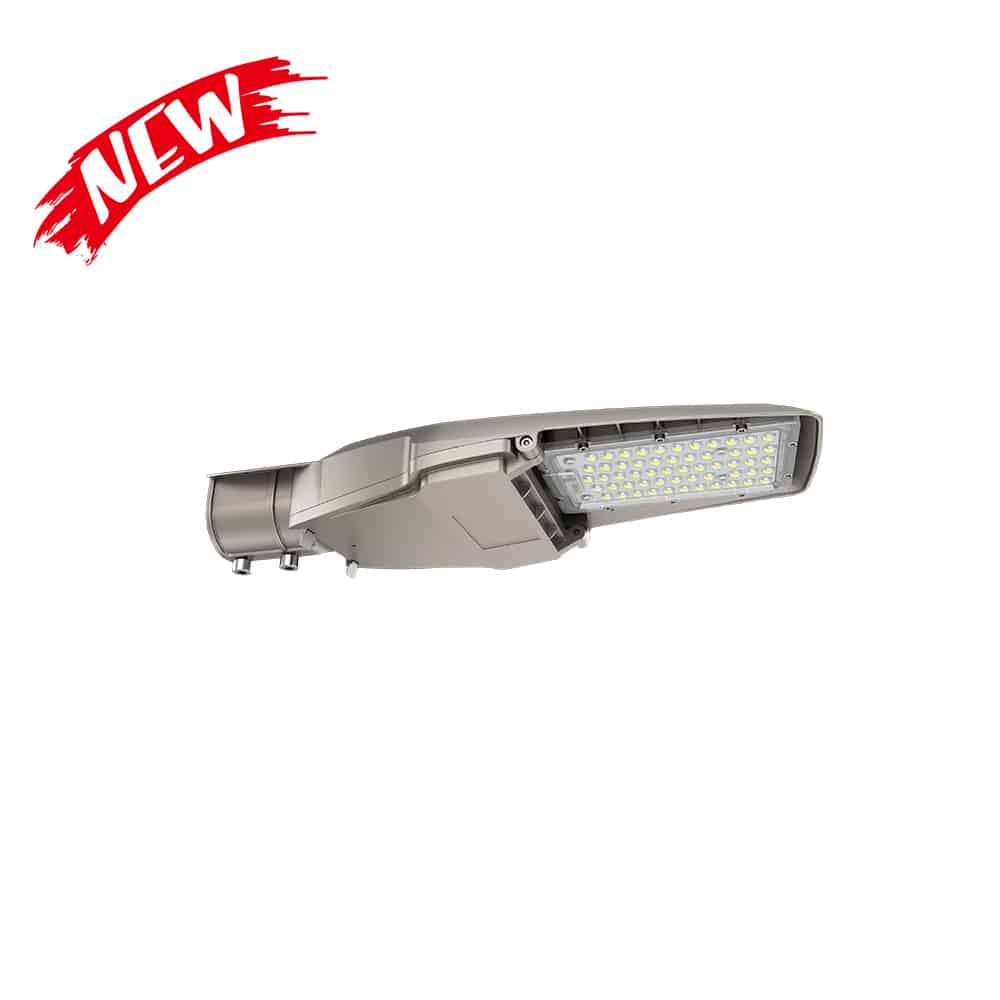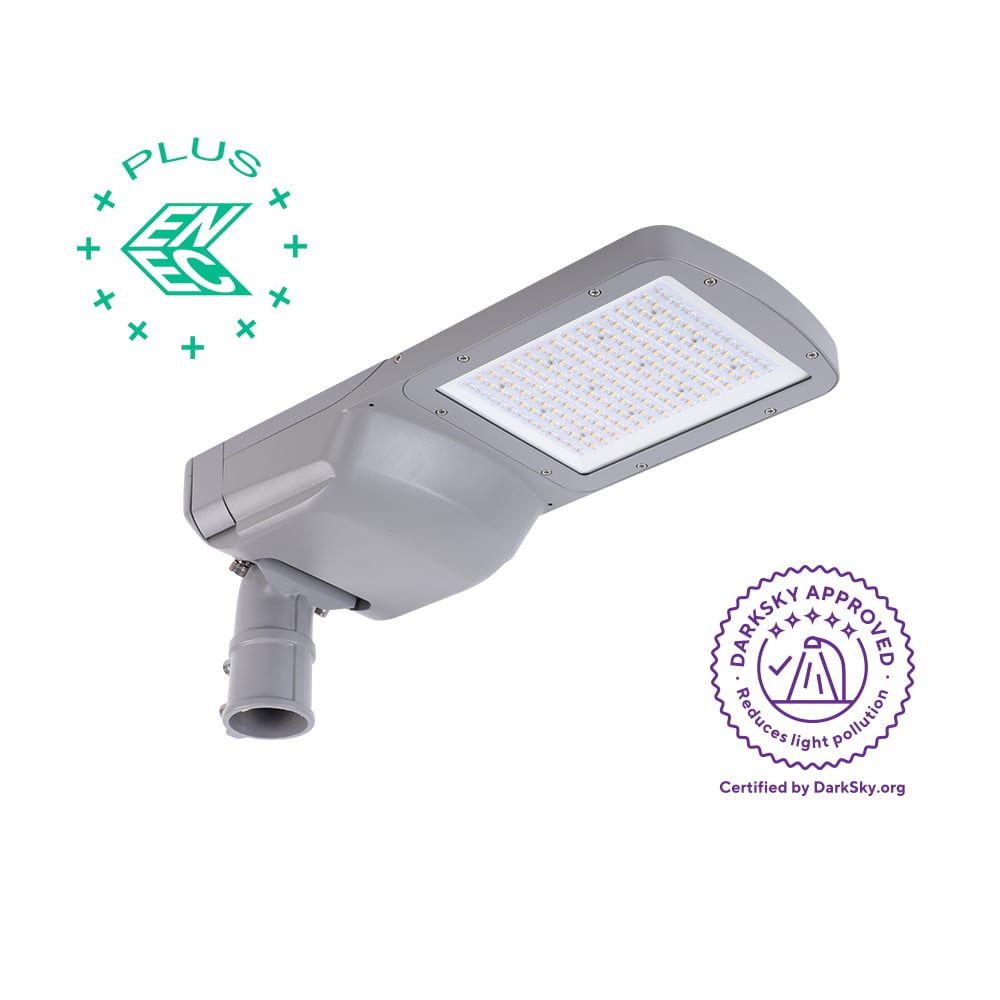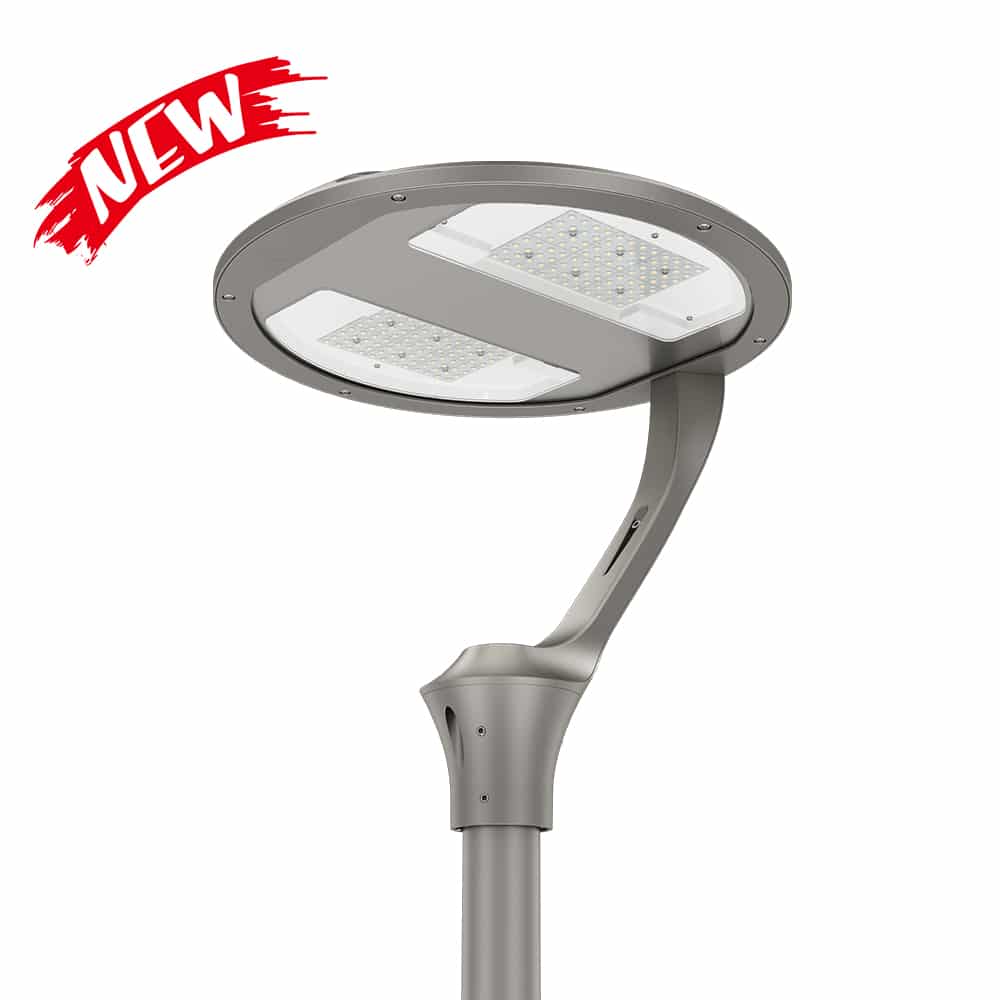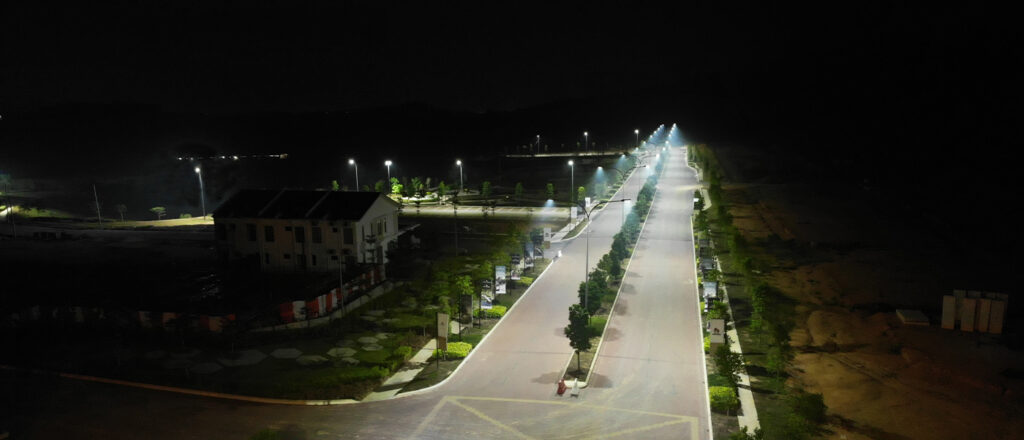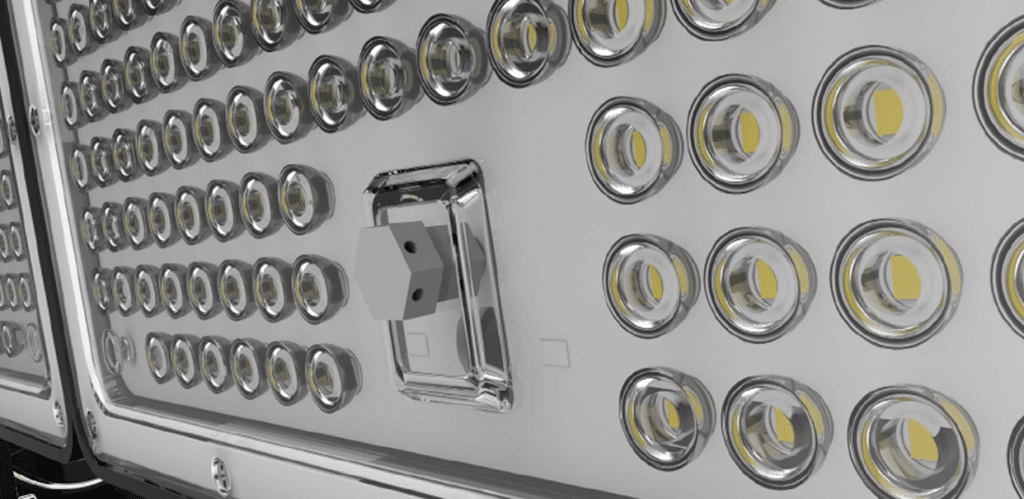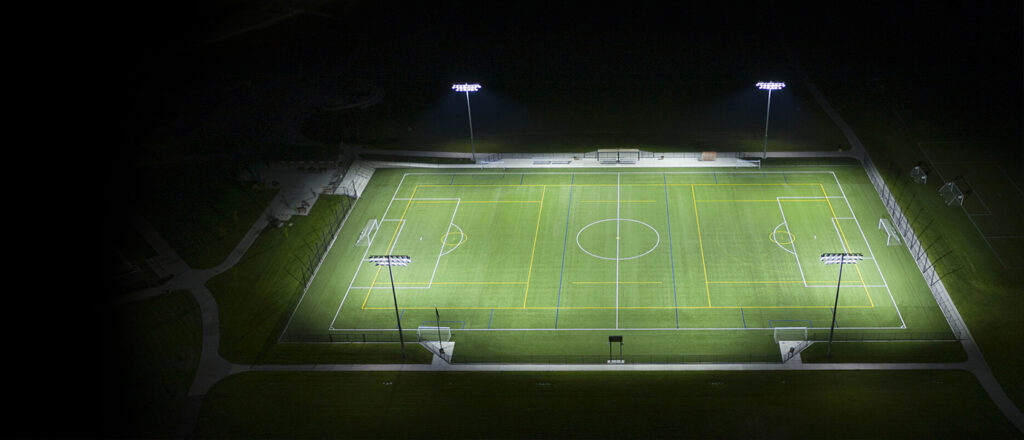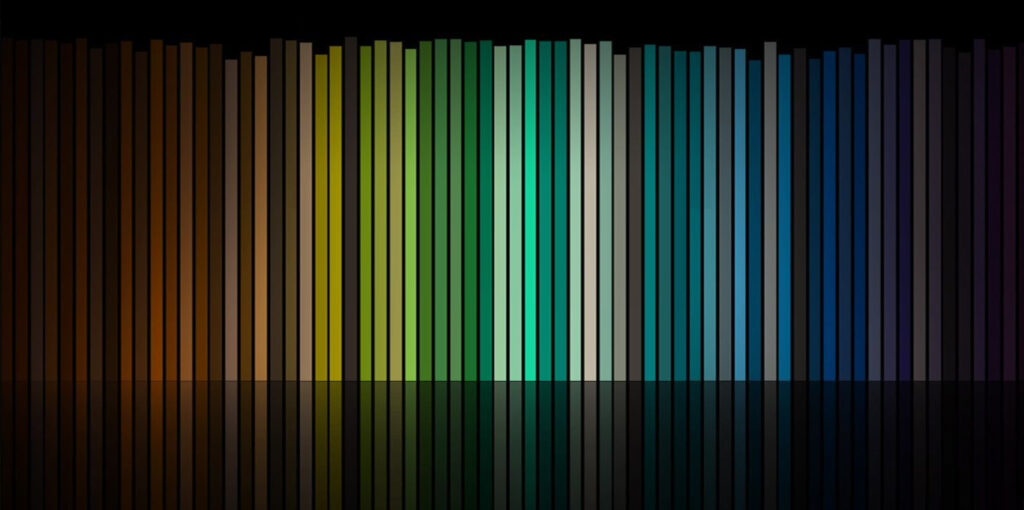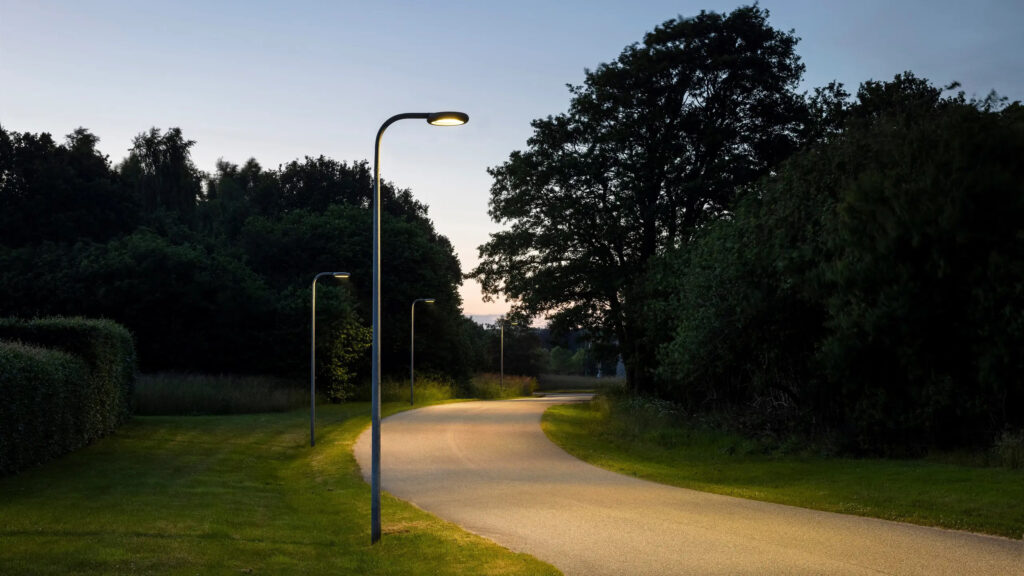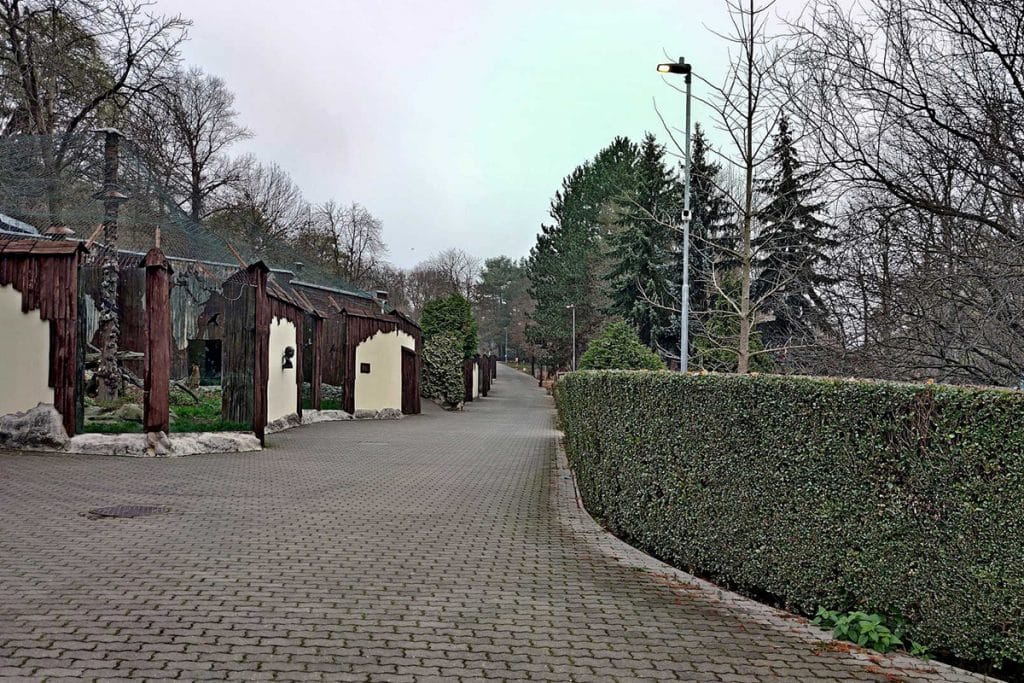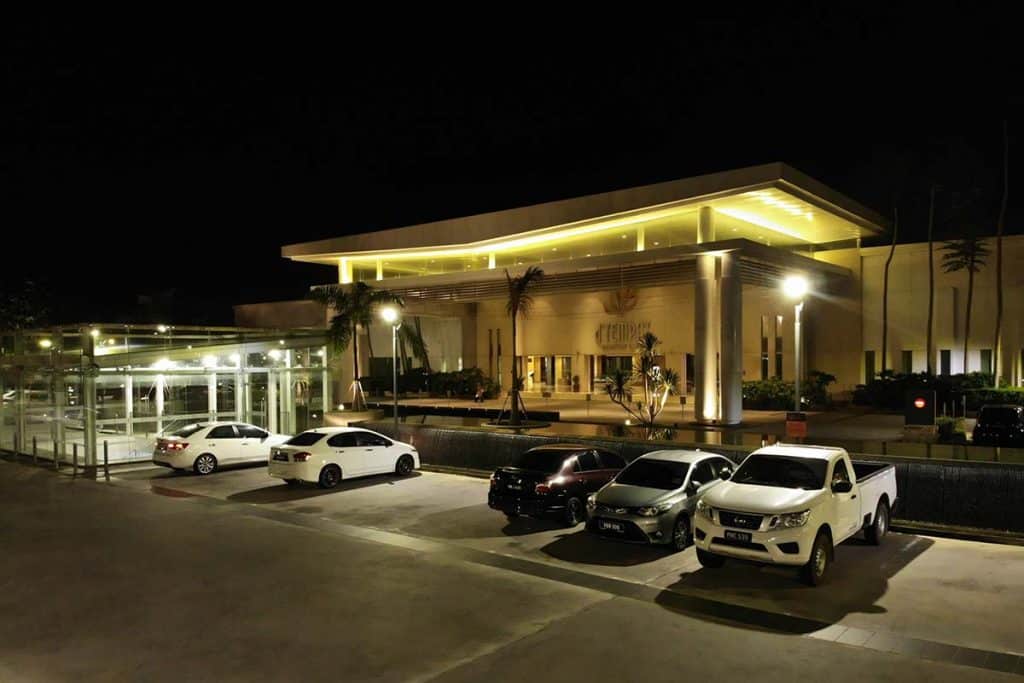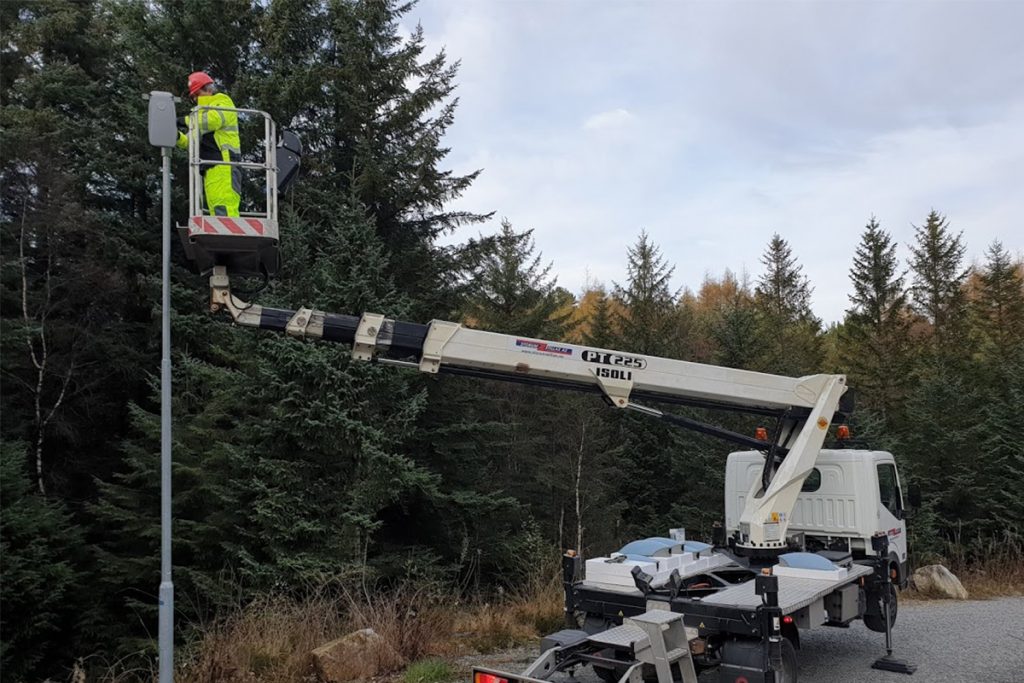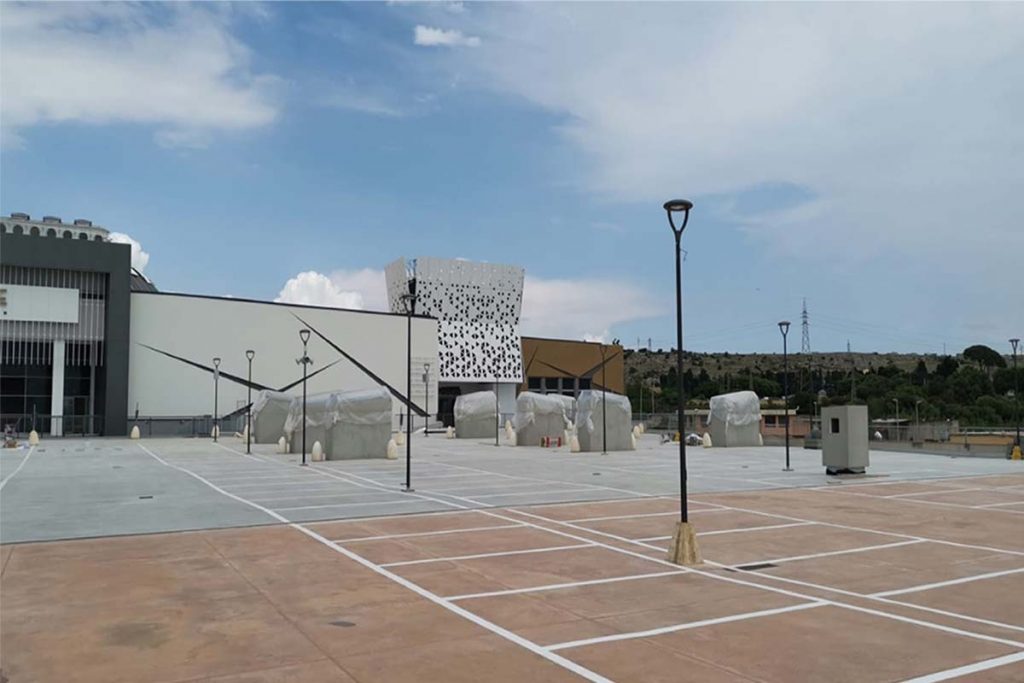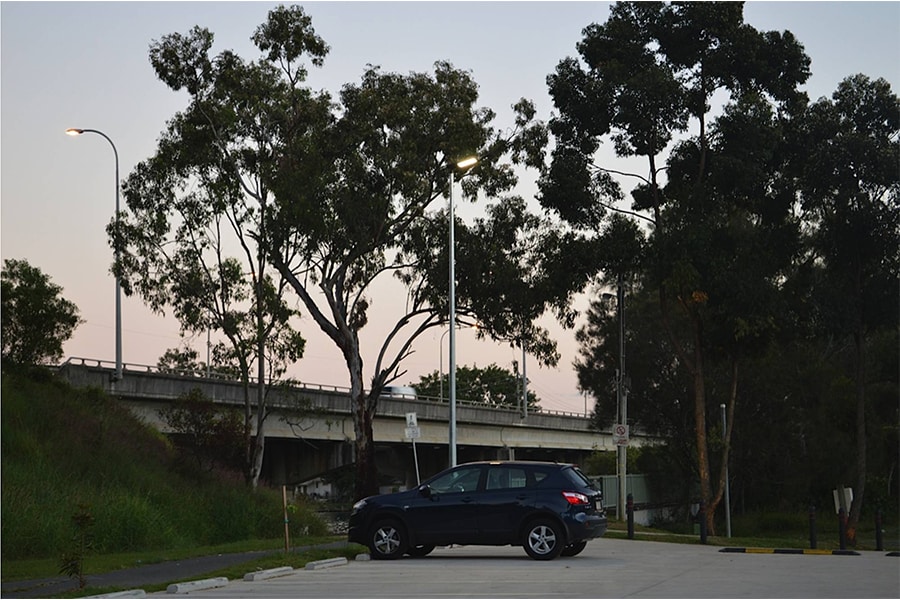8 questions to specify your sports court lighting to avoid costly mistakes
8 questions to specify your sports court lighting to avoid costly mistakes
Introduction
When designing the lighting for your sports venue, you face numerous decisions. As the decision-maker, the standards you set will impact your community’s recreational or sports program for 20 to 30 years. A trouble-free lighting system provides a safe, energy-efficient, and comfortable environment for sports and leisure. Conversely, a sports court lighting system that requires frequent maintenance, consumes a lot of energy, and is disruptive to residents can lead to disappointment and even complaints. Throughout the process, several key questions warrant consideration, such as the advantages of LEDs, whether your project is a replacement or new construction, why pole height is a concern, and how many lamps are needed for your stadium project. Of course, there are many other considerations, such as operating costs, light pollution, and the importance of lighting simulation (ZGSM lighting design solutions). Let’s delve into the details to learn more about achieving the sports court lighting you desire.
Are LEDs suitable for my sports court lighting?
Metal halide lamps and LEDs are two common light source options for sports court lighting. Metal halide lamps were more popular over a decade ago because they offered comparable luminous efficiency to sodium lamps and offered superior color rendering, meeting the needs of players, spectators, and referees. However, with the increasing efficiency of LEDs, they are gradually replacing metal halide lamps in sports court lighting. Only in specific circumstances, such as when existing metal halide lamps are performing well and individual bulbs in the replacement lighting solution still meet relevant lighting standards, can continuing with metal halide lamps be a viable solution. In many cases, ZGSM believes that replacing metal halide lamps with LEDs, or using LEDs in new sports court, is a superior option. We have listed three key reasons for this, all fundamental advantages of LEDs. First, LEDs offer higher luminous efficiency (How to improve luminous efficacy?), a better color rendering index, and a wider range of color temperatures than traditional light sources. Currently, LEDs can achieve more than twice the luminous efficiency of metal halide lamps. Combined with optimal light distribution, they offer significantly better energy savings than metal halide lamps. Second, LED sports court lights have a longer lifespan. LEDs degrade more slowly over time than traditional light sources, and their driver failure rate (MTBF) is also lower. These factors contribute to LED sports court lights providing more consistent illumination. Third, LED sports lights are highly controllable. The instant on/off feature of the diodes and the RGBW solution are particularly valuable, particularly for events like athlete entrance ceremonies and halftime performances. Furthermore, the mature intelligent control technologies (PLC, DMX, and LoRa/Zigbee) that complement LED lighting solutions enable real-time dimming of sports court lighting to meet the lighting requirements of varying levels of competition and training.
Are there any light poles and are there traditional lights on the light poles?
Light poles and traditional lamps are the two core basic hardware for sports lighting. Generally speaking, most light poles currently have traditional lamps installed on them, and it is rare to place light poles without selecting lamps in advance. We can use the LED equivalent chart (What’s LED equivalent chart?) to convert the wattage of LED lamps and then replace them. Of course, if you know the lighting level that your sports court needs to meet, we can also perform lighting simulations based on the position and height of the lamp poles to confirm the wattage and light distribution of the replacement lamps. When replacing these lamps with LED lamps, we need to re-evaluate whether the load capacity and wind resistance of the lamp poles after installing the LED lamps meet the design requirements. This entire process also involves whether the position and height of the lamp poles can provide uniform and light-pollution-free lighting for the sports courts.
Why is the height of the light pole important?
Light poles are a key component of a sports court lighting system, and their height significantly impacts light distribution on and around the field. It directly influences illumination angles, light distribution, and spill light control. The following diagram illustrates the relationship between pole height and light distribution, helping to better understand the importance of pole height. Generally speaking, taller poles provide more precise light distribution across the field. However, lower poles often increase their tilt angles to illuminate areas farther from the poles. Thereby to meet standard illumination uniformity requirements, some light will inevitably be directed toward the sky and surrounding non-playing areas, causing light pollution (What’s light pollution in sports lighting?). For example, FIFA recommends a pole height of 15-22 meters for training pitches (varies depending on the number of poles), while higher-end stadiums with high masts or towers can reach even higher heights. However, when city regulations or environmental constraints necessitate lower poles, achieving the desired illumination often requires increasing the number of poles or employing stadium lights with very narrow beam angles. The distance between the pole and the field, surrounding structures (such as stands or buildings), and future expansion plans also influence pole height. For example, the farther the pole is from the field, the higher the pole should be. Furthermore, if the luminaire can be installed around the stadium canopy or roof, the pole height can be reduced.

Why should I concern about spill light and glare?
Spill light, glare, and sky glow are all considered wasted or harmful light. If your lighting solution has excessive light spill, it’s unlikely to be energy-efficient. This light can also impact the lives of residents near the stadium. Darksky calls this light trespass. In the previous section, we mentioned that raising the poles appropriately can reduce light spill, and using optimized light distribution can also reduce light spill. Therefore floodlights with narrow beam and asymmetric light distribution are ideal options. Sky glow is also a form of light spill, diverting light that would otherwise be directed toward the stadium toward the sky. This type of light pollution can negatively impact wildlife and astronomical observations. Therefore, for stadiums near nature reserves, regulations require a 0% upward lighting ratio, as per EN12193 or Darksky standards (More about Darksky). When a lighting solution has light spill or sky glow, glare often also occurs. Glare can make it difficult for athletes to see the ball, increasing the risk of injury, and can also negatively impact the viewing experience for spectators. Because glare negatively impacts athlete safety, spectator experience, and referee enforcement, controlling glare is crucial for sports court lighting. For extremely high-intensity LED sports lights, proactive optical control measures should be implemented to reduce glare. These include increasing lamp pole height, employing asymmetric light distribution, using shielded LED lights, and optimizing horizontal installation designs. If interested, contact ZGSM for glare-reducing sports court lighting solutions.
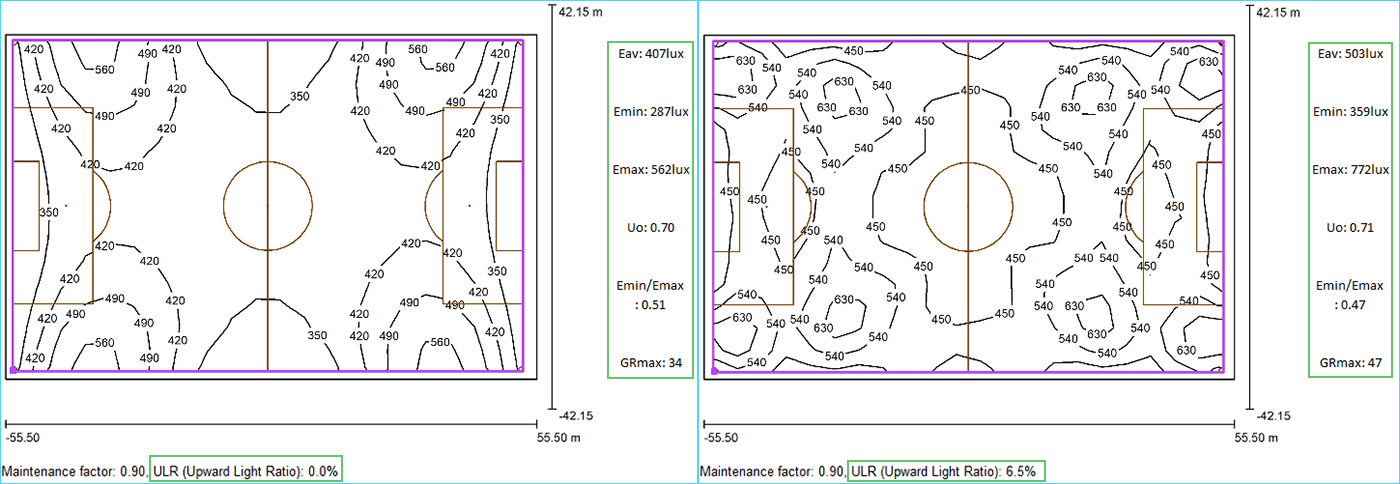
How many lamps do I need? Or what is the total wattages?
How many lamps, wattages, or lumens do I need for my sports field? To answer this question, you need to know the size of your field and the required illumination. These two factors directly impact how many lumens you need to illuminate every corner of the field (meet the required illumination). There’s a correlation between lumens (wattage) and illumination: 1 lux is equal to 1 lumen of light evenly distributed over 1 square meter. Therefore, the total number of lumens required for your field = field size * illumination requirement. For example, a standard football field is 105 meters long and 68 meters wide, covering an area of 7,140 square meters. The total required lumens is 500 lux x 7,140 square meters = 3,570,000 lumens. In this conversion process, we assume that all light is directed toward the target court, but this is difficult to achieve. Based on years of experience, ZGSM estimates that 20-30% of the light is directed toward the perimeter of the court, meaning the actual total lumens required is 3,570,000 divided by 0.8 or 0.7. Furthermore, we must consider the maintenance factor (more about MF in lighting design). Finally, we divide the total lumens by the luminous flux of each luminaire to determine the number of luminaires required. In summary, we can first determine the sports court dimensions, then determine the illuminance based on the level of competition being hosted. This total lumens can then be used to calculate the number of luminaires required. Of course, this is only an approximate calculation; actual application will be affected by factors such as pole height, pole distribution, and glare. Therefore, lighting simulation is a more effective verification method. Below, we provide the required registration numbers and total wattage/lumens for different courts under Lighting Class II requirements.

How much do the lamps cost and how much do they cost to run?
The cost of LED sports court lighting isn’t as high as you might think. On the contrary, LED’s energy-saving features can reduce your daily electricity consumption by more than half. For example, a standard football field requires 24pcs 1800W Glomax high-mast lights. Operating for five hours a day, they consume 43.2 kilowatt-hours of electricity, resulting in a daily electricity bill of $64.8 (0.3 USD per kilowatt-hour). The lighting fixtures cost approximately $20,000. Assuming a 50% energy efficiency, these fixtures should pay for themselves in about two years. If the lighting is used more frequently, switching to LEDs can more quickly recoup the cost through energy savings. Furthermore, LED lighting installation involves the costs of climbing equipment, labor, and accessories, which we won’t discuss here. We recommend consulting a local contractor. Finally, there’s the ongoing maintenance cost of sports court lighting. While LEDs are generally expected to have a lifespan of at least 10 years, ZGSM still recommends choosing high-quality LED fixtures to minimize maintenance and costs. The key measure is to select lamps with low lumen decay and pair them with LED drivers with a low MTBF (What’s Mean time between failure?) rating. The slower the lumen decay, the longer the lamp can maintain high lumen output. The higher the MTBF value, the fewer failures the LED driver will experience during use. Both of these factors can further reduce the maintenance requirements of LED lamps.
What other factors will affect the cost of lighting my sports court?
In addition to pole height, pole location also influences the number and wattage of stadium lights used. For example, if your pole is farther from the field, you often need more fixtures to illuminate the field. Even if you use very narrow beam angles, the cost of these fixtures can sometimes increase. Luminous efficacy also significantly impacts cost. Higher luminous efficacy reduces the number of fixtures required, resulting in lower electricity consumption over time, which translates to a shorter ROI (return on investment) period for this lighting project. If your initial budget is sufficient, ZGSM recommends using high-efficiency LED luminaires to illuminate the field. This strategy also applies to street lighting, as many street lighting projects now use luminous efficacy as a key evaluation metric. The goal of sports court lighting is to create a suitable lighting environment. In addition to indicators such as illuminance and uniformity, high-quality lighting also involves parameters such as TLCI, CRI, and flicker factor. If your project requires these, you should select high-quality stadium lights to meet these requirements, as they cannot be optimized through lighting simulation. Stadium lights with high TLCI and CRI (more about the difference between TLCI and CRI, High efficacy vs High CRI) tend to cost more. Using high-quality power supplies can reduce the flicker factor, but this also increases the cost. This is very beneficial for spectators watching games, TV broadcasts, etc. If your stadium has such requirements, ZGSM recommends following the corresponding standards.
How can I ensure that I get the lighting results I want?
To ensure your sports court lighting project achieves its intended results, ZGSM recommends a step-by-step approach, from initial project planning to product selection and lighting simulation, and finally, verification. Initially, we need to confirm the stadium’s dimensions, pole location, pole height, lighting requirements, and other special requirements such as glare, CRI, flicker factor, and upward lighting. Next, we can conduct lighting simulations and product selection, which are often conducted together. For example, if your stadium requires videography, it makes sense to choose stadium lights with a higher CRI and lower flicker factor (What’s flicker factor?), allowing the camera to capture the scene more realistically. If you have specific requirements for glare and upward lighting, choosing asymmetric lighting or flood light with hood can reduce glare and minimize the proportion of upward lighting. Of course, we can also optimize lighting design (lighting simulation) to minimize glare and other issues. During the lighting simulation, we should strictly adhere to the client’s pole height and location to ensure that the installed luminaires meet the required illuminance, glare, and uniformity. During this process, we may screen the luminaires based on wattage, light distribution, and accessories to finalize the number of luminaires (total flux), light distribution, and other accessories. The lighting simulation provides detailed information on luminaire wattage, light distribution (What’s light distribution?), layout, and aim point (tilt angle), providing guidance for installation. Simulated information on illuminance, uniformity, glare, and upward lighting can help you determine whether the fixtures meet your requirements and facilitate final on-site verification. Below is ZGSM different lighting design solution, click to find the more details.
Summary
This article systematically addresses the core issues of a sports court lighting project, from planning to implementation. It begins by clarifying the long-term impact of the decision and then delves into the significant advantages of choosing LED sports court lighting solutions, including their ultra-high luminous efficacy, long lifespan, and intelligent controllability, making them an ideal replacement for traditional metal halide lamps on sports courts. We then emphasize the importance of evaluating existing light poles, including their height and location, as they directly impact light distribution, illuminance uniformity, and the impact on light pollution such as spill light and glare. These factors are crucial for energy conservation and environmental protection, as well as athlete safety and neighborhood harmony. Furthermore, we provide a basic method for calculating illumination and the number of luminaires based on court dimensions and event level, and provide a detailed analysis of the initial investment and long-term operating costs of LED lighting, demonstrating its rapid return on investment through energy savings. Furthermore, the article highlights parameters such as pole layout, luminaire efficacy, and TLCI as key factors influencing the final results and total cost. Finally, to ensure that expectations are met, the article recommends optimizing the design through professional lighting simulations and focusing on the quality of optical components and power supplies when selecting products, thereby achieving ideal and reliable results in terms of illumination, uniformity (What’s light uniformity?), glare control, and other aspects.
Related Products
Related Blogs
Related Cases
People also ask
Author introduction
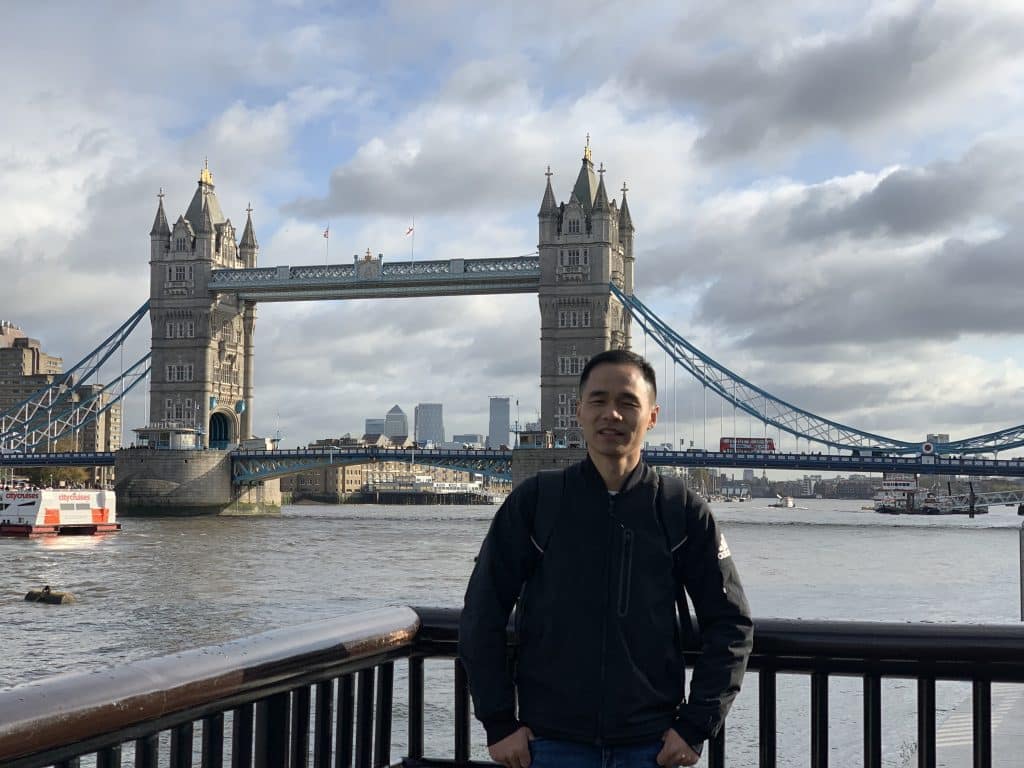
Hello Customers,
My name is Taylor Gong, I’m the product manager of ZGSM Tech. I have been in the LED lights industry for more than 13 years. Good at lighting design, street light system configuration, and bidding technology support. Feel free to contact us. I’m happy to provide you with the best service and products.
Email: [email protected] | WhatsApp: +8615068758483

